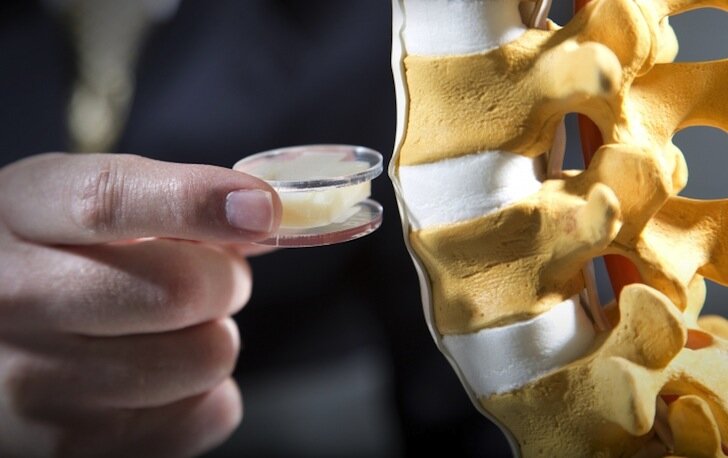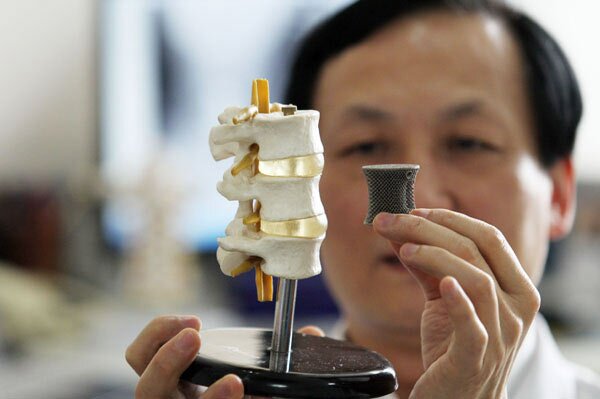As bioprinting continues its rapid advancement we’re getting glimpses at how medicine and health will change in the coming decades. From severe burns to maiming, 3D printing will provide the most complete and comfortable treatments. Those experiencing non-emergency ailments will also find relief through 3D printing. Of particular note are the back pain, reduced mobility, and numbness associated with degenerated and herniated discs. Researchers in at least three different countries are developing 3D printed implants to treat such conditions.
United States
A team at Cornell University led by Dr. Lawrence Bonassar has had success with printing stem cells directly onto degenerated discs in rats. The stem cells turn into spinal disc cells over a couple weeks and the rats regain mobility. Dr. Bonassar believes that it will be possible to print entire discs in the future.
China
Dr. Liu Zhongjun is Chairman of the Department of Orthopedic surgery and the Research Center of Spinal Surgery at Peking University Third Hospital in Beijing. He’s heading up the human trials of 3D printed titanium implants after successful animal tests that occurred in 2010. “3D printing technology has two very nice features: One, It can print specific structures; Two, it is capable of producing porous metal,” Dr Zhongjun explained. Titanium implants are a standard because they are biocompatible and are rarely rejected, but having them porous allows bone to grow into them instead of pushing them around. Dr. Zhongjun reports that the results are promising, “We started clinical trials on 3D printed implants late last year, and now we have used dozens of such implants for more than 50 patients… All the patients recover very well. Nobody seems to have any undesirable side effects or adverse reaction.”
Japan
Researchers at the Kyoto University Graduate School of Medicine are doing essentially the same thing as the Chinese team, having implanted the titanium implants into four patients. All the patients reported reduced numbness and increased mobility.
Until now implants have been from cadavers or grafts, which are riddled with issues ranging from availability to biocompatibilty. Titanium is in abundance and can be customized for each patient through MRI scans. Such implants can cost as little as a few dollars in materials.



